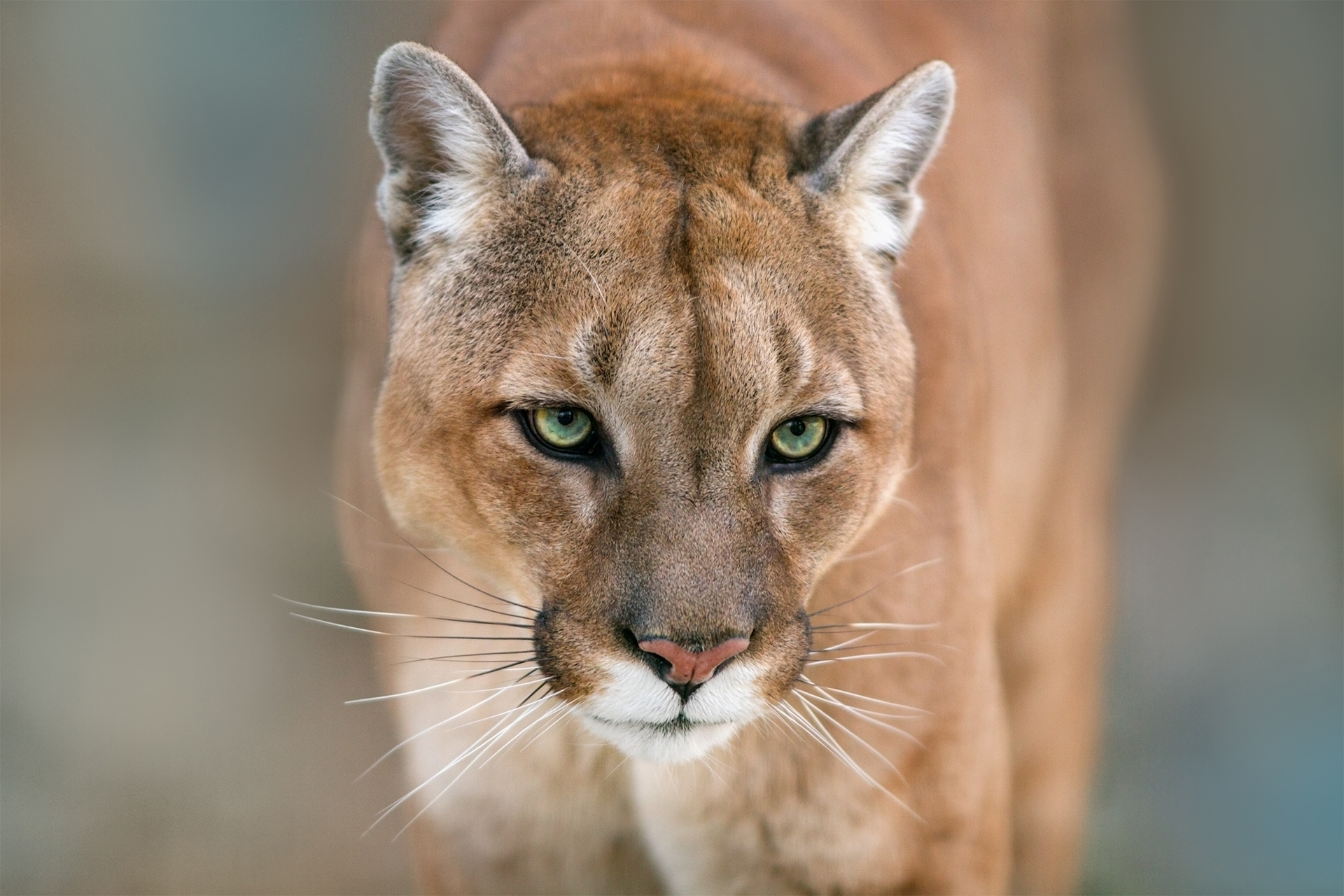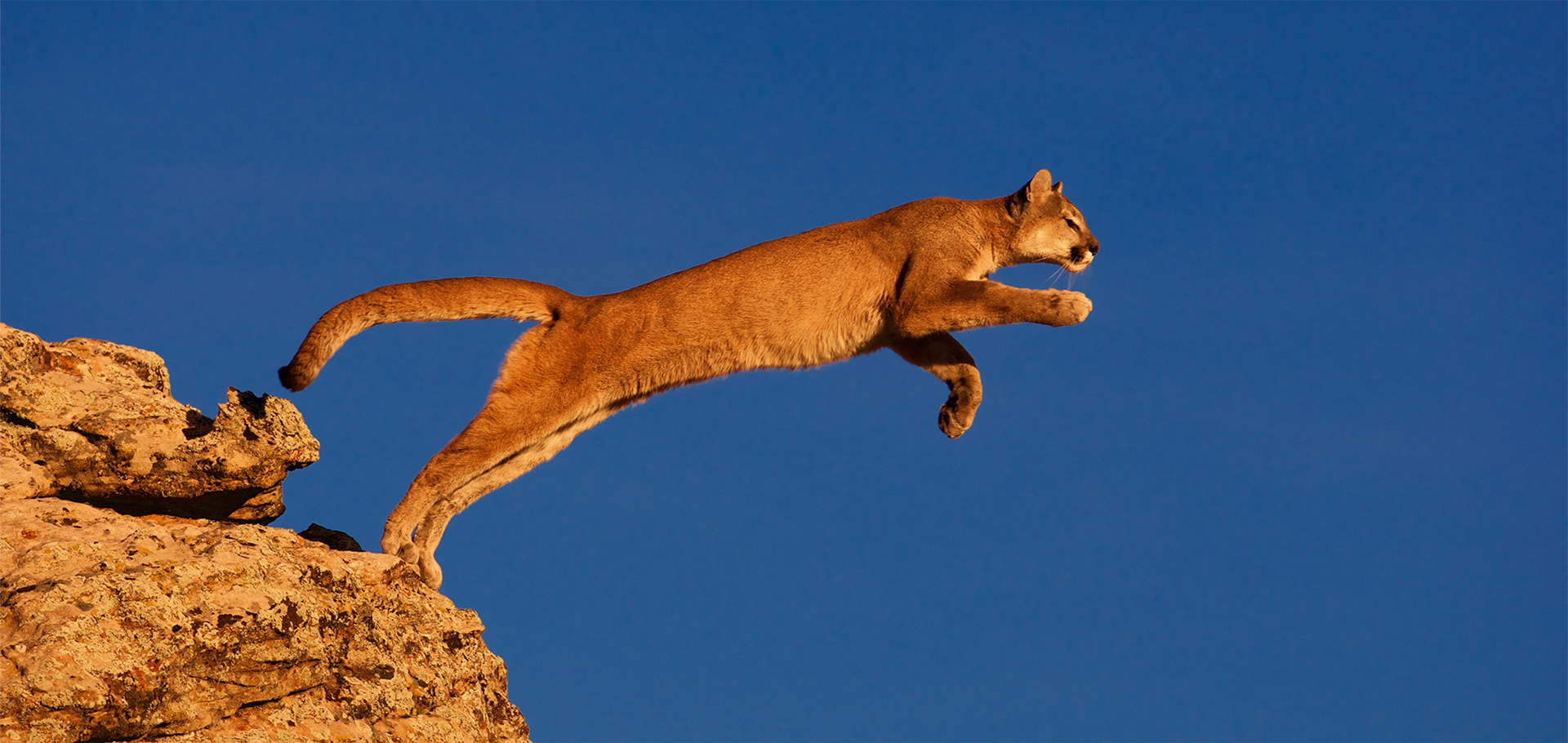Los Angeles recently celebrated the life of a very famous and dearly loved personality: “Hollywood Cat” P-22 (Puma No. 22). The sole mountain lion to make the Santa Monica Mountains National Recreation Center its home gained quite the reputation during his ‘reign’ in Tinsel Town. His death by euthanasia—because of existing illnesses and a recent injury from a possible vehicle strike—was bemoaned by many animal lovers locally, nationally and even globally.
Unique to P-022’s case was that he called Griffith Park, on the eastern side of the Santa Monica Mountains, his home—a very small geographic area for an adult puma to thrive in or find a mate. P-22 made it over from the western side of the mountains where he was born, crossing two major city freeways—something that other mountain lions have died attempting.
Through his long presence in L.A., P-22 brought attention to pumas worldwide. In this memory, we explore this big cat’s history—and future.
Where Do Mountain Lions Live?
Pumas, cougars, panthers, painters, catamounts, mountain lions—all of these names refer to one large wild cat with the scientific name Puma concolor. The multitude of names can be attributed to the animal’s past abundance across the western hemisphere and the different tribes and nationalities that encountered the species over time.
Today, the story is different. Only 14 western states in North America have mountain lion populations, with a few other very small and negligible numbers in other locations. Experts estimate that about 30,000 cougars call the United States home, with the majority living in Colorado, Montana and California.

Reasons for the reduced numbers include growth in human populations where mountain lions were once present, poaching and hunting, loss of habitat due to natural disasters and land development, and even pollution. And with most mountain lions maintaining a solitary presence—they only move in packs when mating or parenting—tracking their movements is a Herculean task.
At Bryce Canyon National Park, mountain lions have been occasionally observed at night along the park roads or when caught for a quick second in car headlights. The big cats are most active in the winter, when weather conditions keep the majority of visitors at bay. Mountain lions can also be found in the Grand Canyon, but here, too, they are elusive and extremely difficult to track.
Central and South America have some puma populations as well, mostly concentrated in Peru, Venezuela, Colombia, Chile, Honduras, Panama, Belize and Costa Rica. Mountain lions can survive in a variety of habitats, including mountains, forests and even deserts.

On the prowl in the American Southwest.
8 Fast Facts About Mountain Lions

- Mountain lions can climb over a 12-foot fence and leap 15 feet up a tree with ease. They are also known for their speed.
- They are strictly carnivores. Cougars eat deer, elk and other smaller animals. Only on very rare occasions would you find one feeding on vegetation.
- In the wild, mountain lions live about 10 years. In captivity, mountain lines can live for twice as long. At 12 years old, P-022 was one of the oldest males documented by the NPS.
- Pumas don’t roar like other large wild cats. Instead, they hiss, purr and growl just like house cats do.
- They have excellent night vision, so most pumas are on the prowl between sunset and sunrise, hunting for their prey. Therefore, in areas with known mountain lion presence, it is advisable to refrain from walking alone in the streets or leaving small pets or children out after dark unsupervised.
- The cats are listed in the Guinness Book of World Records as the mammal with the most names, with more than 40 in the English language alone!
- They rarely attack humans. Cougars shy from any interaction with humans, and, during the rare encounter, they usually scare easily and run away.
- Baby mountain lions—called cubs or kittens—have blue eyes and spots on their skin, both of which lose color as they mature to adulthood. Males are called toms and females are called queens.

Cougar Conservation
Although considered of ‘least concern’ per the International Union for Conservation of Nature
Red List of Threatened Species, it is important to act now to conserve the species, as numbers of mature mountain lions keep declining. Several organizations are involved in programs to increase mountain lion populations in their areas through education, research, awareness and other conservation efforts.
Panthera, an organization that works to protect wild cats, uses outreach, research, monitoring and education to help promote growth in mountain lion numbers. The nonprofit’s main goals are to educate the public about pumas and their importance to ecosystems, address the fragmentation of mountain lion habitats that negatively affects the connectedness of the puma populations, reduce hunting and trapping of the species, and increase human tolerance toward them.
The Cougar Conservancy has a SaveLA Cougars program and works to reduce human-wildlife conflict and conserve cougar populations. It is part of the public-private partnership to construct the Wallis Annenberg Wildlife Crossing in California—the world’s largest wildlife overpass—along with several other organizations. The group also promotes adding cougars to the California Endangered Species Act.

3 Ways You Can Help Mountain Lions
1. One of the easiest ways to help cougars is to support organizations working toward conservation efforts, such as the ones mentioned above.
2. Want to see mountain lions in the wild? Ensure any wildlife tour or other outdoor expedition involving mountain lion sightings is organized with the best intentions for the species and their survival. Nat Hab’s trips to places like the American Southwest, the Amazon, Patagonia and Costa Rica encourage wildlife conservation while taking travelers to wild places.
3. If you live in (or visit) an area with puma populations, make your safety and theirs a priority. Mountain lions involved in human-animal conflicts are at a higher risk of being captured and euthanized. Always check your surroundings, especially after dark, and ensure you have company when out for a walk on lonely streets. Although cougars rarely attack people, they may do so if they feel threatened. Learn what to do in case of a mountain lion encounter and how to scare it away.
































